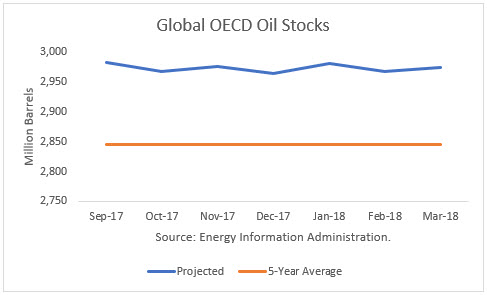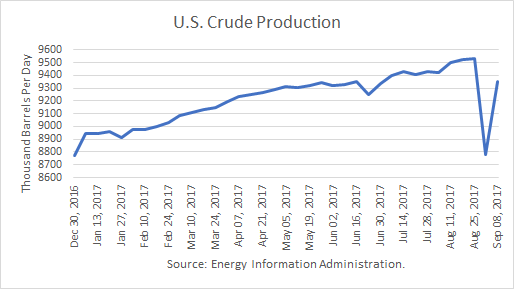
The Energy Information Administration (EIA), International Energy Agency (IEA) and Organization of Petroleum Exporting Countries (OPEC) each released their monthly global oil assessments and projections. They agree that the global oil glut will not be whittled down to anywhere near OPEC’s target of the 5-year OECD average by year-end. Their numbers also imply that global inventories in 1Q18 will build.
The EIA numbers indicate that stocks will be 130 million above the average, just slightly below September’s estimate at end-March.

OPEC does not project its own production, and it, therefore, does not produce future global inventory levels. But assuming September OPEC production for 4Q17 and 1Q18, stocks will drop by 51 million barrels in 4Q17 and rise by 74 million in 1Q18, a net gain in inventories from September. Continue reading "Oil Price 'Risk Premium' to Play Out Over 4Q17"



